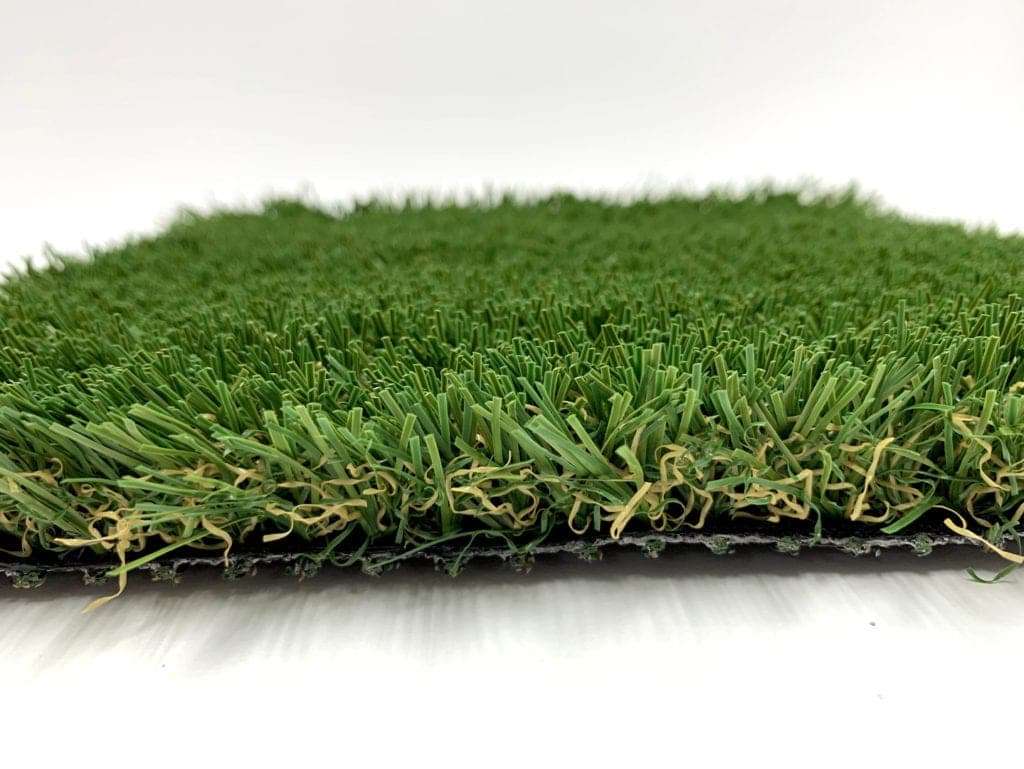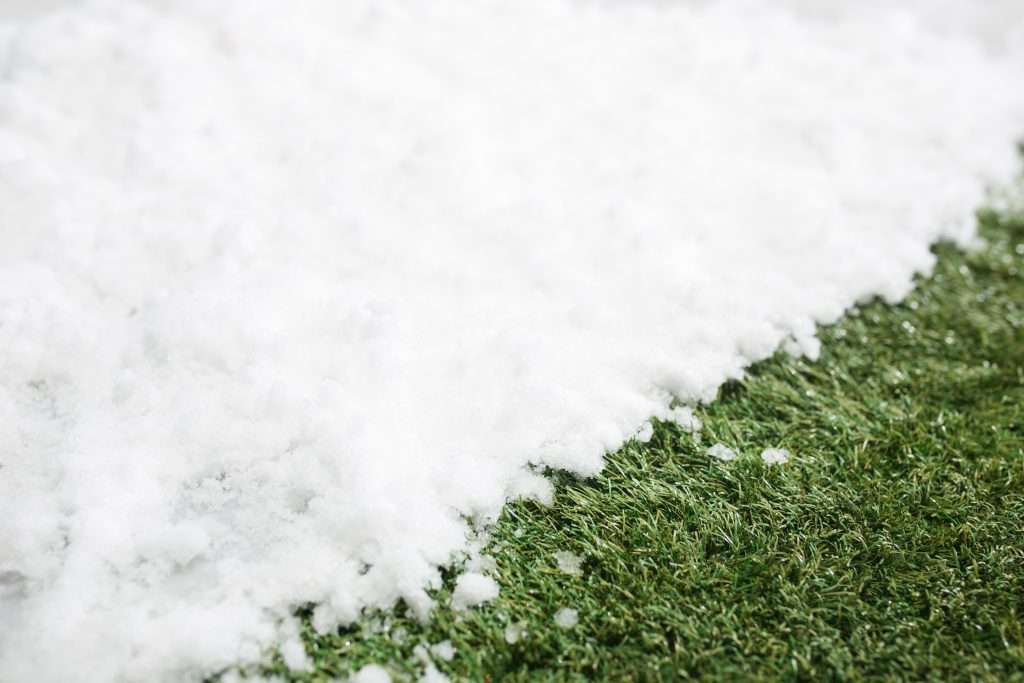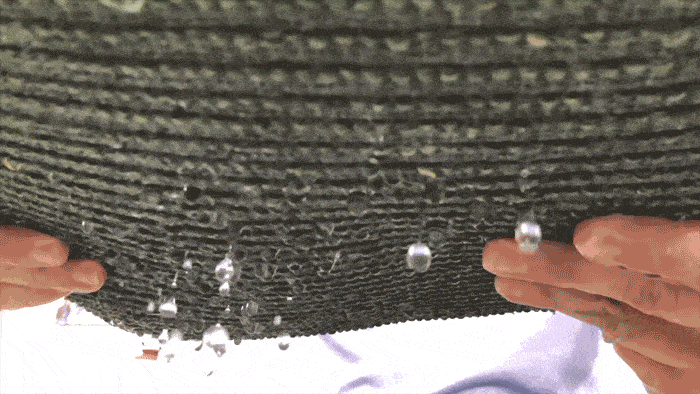Seeking the essentials on how do you maintain artificial grass? Skip the fluff with our concise guide, designed to directly answer your key concerns. Achieve a well-maintained synthetic turf with simple, streamlined advice that effortlessly integrates into your routine, ensuring a lush lawn for years to come.
Artificial grass requires regular cleaning, including monthly debris removal and rinsing, to ensure its longevity, which ranges from 15 to 25 years.
Immediate action on spills and stains is critical for maintaining artificial turf’s appearance, using household cleaning solutions and professional products for stubborn stains.
Professional installation and routine maintenance by trained technicians can significantly extend the life and beauty of artificial grass by ensuring proper drainage, seam alignment, and fiber rejuvenation.
To start with, bear in mind that the longevity of artificial grass, which can last from 15 to 25 years, greatly depends on proper maintenance. A regular cleaning regimen, including debris removal and rinsing, will keep your turf in prime condition.
Also, don’t underestimate the importance of professional installation and routine maintenance; these can significantly extend the life and appearance of your synthetic lawn.

A stitch in time saves nine, and regular cleaning is the stitch that maintains the fabric of your artificial turf. Although it requires significantly less upkeep than natural grass, maintaining its beauty necessitates a regular care regimen. Monthly or weekly, take the time to remove pet waste, clear debris, and rinse away the remnants of day-to-day wear. This routine maintenance not only extends the life of your artificial grass but also ensures it remains a stunning and clean backdrop for your outdoor activities.
Cross-brushing against the grain in high-traffic areas prevents the synthetic fibers from becoming matted and keeps the blades standing tall and proud. Removing stains promptly and effectively will help avoid permanent discoloration and ensure that your lawn continues to impress. Whether it’s a casual gathering or a boisterous playdate, your well-maintained artificial turf will be the envy of the neighborhood.
Maintaining a pristine artificial lawn is an art that starts with immediate action. Don’t let spills and stains set in and mar the beauty of your synthetic grass. Should a mishap occur—be it a splash of wine, a dribble of barbecue sauce, or a drop of grease—tackle it immediately. Here are some steps to follow:
Blot the spill with a paper towel.
Follow up with a mix of hot soapy water to clean most stains.
For the more stubborn stain, an ammonia solution might be necessary.
For particularly tricky marks, like paint, turn to a water-soluble solution.
The key is to clear debris and remove any leftovers quickly, especially after events like a family barbecue. Left unattended, these can obstruct drainage and provide a breeding ground for bacteria. So keep your garden hose at the ready and your maintenance tips in mind. A prompt response can mean the difference between a fleeting blemish and a lasting scar on your artificial turf.

Just as energy-efficient windows in a home are crucial, so too is the professional installation of artificial grass for its performance and durability. An expertly laid synthetic lawn ensures proper drainage, avoids unsightly seams, and keeps the turf securely in place. Low maintenance doesn’t mean no maintenance, and a professional touch can make all the difference. Routine maintenance by trained technicians ensures that your artificial grass is not just cleaned but rejuvenated, with fibers re-bloomed and infill levels optimized.
The investment in professional services pays dividends, extending the life of your synthetic lawn far beyond what regular home care can achieve. Consider it akin to a spa treatment for your lawn, where specialized care revives and restores, ensuring that the artificial turf continues to serve as a lush, verdant oasis amidst the urban sprawl.
Walking on your artificial lawn should always be enjoyable, and preserving this joy requires both a toolkit and a well-thought-out plan. To maintain artificial grass, you’ll need a hose for rinsing, a non-metal rake for brushing, and a commitment to regular upkeep. Unlike real grass, your synthetic turf won’t grow out of control, but it can accumulate dirt and debris, especially if it’s located near construction sites or experiences heavy foot traffic.
Regular artificial grass maintenance involves not just cleaning the surface, but ensuring that the synthetic fibers remain upright and vibrant. This is where professional turf brushes can come in handy, helping to redistribute infill and keep the blades of grass standing tall.
Consider your turf lawn an instant lawn that’s always ready for company—as long as you stick to a routine maintenance schedule for your turf lawns.

Keeping your artificial lawn clean starts with the basic task of removing debris. Leaves, twigs, and other debris can cause the turf fibers to mat, detracting from the lawn’s appearance and functionality. What’s more, when this organic matter begins to decompose, it creates a haven for bacteria, which can undermine the cleanliness and safety of your artificial turf. To avoid this, clear debris regularly, especially if your lawn lies beneath overhanging trees.
Fall is a particularly crucial time for maintenance, as fallen leaves can quickly accumulate and clog the drainage system, leading to waterlogging and potential damage. A leaf blower can be a lifesaver, swiftly clearing the surface and ensuring that your synthetic lawn remains dry and functional. And don’t forget to trim those overhanging branches; a little preventative maintenance can go a long way.

If you appreciate the refreshing appearance of a freshly rinsed artificial lawn, you understand the importance of a reliable garden hose. Rinsing your artificial grass lawn washes away not only the visible dirt but also the microscopic particles that can dull its luster. Pollen, dust, and airborne pollutants settle on your lawn, and without the benefit of natural rainfall, it’s up to you to provide the cleansing shower.
In anticipation of the allergy season, when the air is thick with pollen, a thorough rinse can help keep your artificial lawn a respite from the sneezing and sniffling. This simple act of maintenance ensures that your synthetic lawn remains a fresh, welcoming space for relaxation and play.
Artificial turf introduces a distinctive set of challenges for pet owners. Pet waste, if not addressed promptly, can lead to unpleasant odors and bacteria build-up. To keep your synthetic lawn safe and hygienic, remove solid waste as soon as it appears. Rinsing pet urine spots regularly with cool water can help minimize staining and odor. After all, your artificial lawn should be a pleasure for all members of the family—furry ones included.
Innovations like ProGreen’s 100% Permeable Pet Turf with Ultra-Flow technology make pet waste management even easier. These specialized products offer the following benefits:
Rapid drainage, which is crucial in areas where pets play and do their business
Keeping your artificial grass free from lingering odors and bacteria
Maintaining a clean and inviting space for everyone
Safety should remain your foremost priority while maintaining your artificial lawn. Whether you have pets, children, or both, using non-toxic, pet-friendly cleaning agents is essential. A simple homemade solution of white vinegar and water can effectively sanitize your turf without the risk posed by harsh chemicals. For those pesky odors, a sprinkle of baking soda dissolved in warm water can deodorize your lawn naturally and safely.
For more stubborn odors or bacteria build-up, enzyme cleaners are an excellent alternative. They break down organic matter without harming your pets or the environment. In essence, by choosing the right cleaning agents, you can ensure that your artificial turf remains a safe playground for pets and children alike.
Even the best-cared-for artificial lawns can occasionally suffer from stubborn stains or sticky substances. Spills happen, and when they do, it’s essential to act quickly. For most stains, such as coffee or mustard, an eco-friendly cleaner followed by a rinse with water will do the trick. However, for tougher stains like oil or crayon, you may need to employ a diluted ammonia solution to break through the grime.
When you encounter sticky substances like chewing gum or tree sap, the strategy changes. These can be frozen using dry ice or aerosol refrigerants, allowing you to gently scrape them off without damaging the turf fibers. Remember, harsh chemicals and sharp objects are not your friends here—they can cause more harm than good. Instead, rely on specialized grease removers for the most stubborn of spots.
When it comes to cleaning your artificial grass, you may wonder whether to reach for a home remedy or a professional solution. For minor spots and regular upkeep, a mix of natural soap or vinegar with water can be quite effective. These eco-friendly options are easy on the wallet and gentle on your lawn. However, for comprehensive cleaning that targets germs and odors, professional products like PE-51 might be your best bet.
While monthly deep cleaning is recommended for putting greens and high-use areas, don’t discount the effectiveness of home remedies for routine care. A balance of both approaches can keep your artificial turf in top-notch condition. Whether you opt for DIY solutions or professional-grade products, the goal is the same: a clean, vibrant lawn that endures.
The needs of your artificial lawn shift with the changing seasons. With a written seasonal care plan, you can proactively adjust your maintenance routine to suit the weather. In winter, for example, use a plastic shovel or broom to gently remove snow, and be sure to check and reaffix any loose edges of your turf. These simple actions can prevent damage from ice and keep your lawn in prime condition throughout the colder months.
Summer brings its own challenges, particularly in high-traffic areas that may bear the brunt of sun-soaked days and active play. During these times, your synthetic lawn may require additional attention to ensure that it continues to provide a lush, inviting space for relaxation and entertainment. By anticipating and responding to these seasonal demands, you can maintain the quality and appearance of your artificial turf year-round.

Your artificial turf can experience stress from temperature fluctuations due to changing weather patterns. It’s essential to check and secure the edges of your lawn before seasonal transitions to prevent peeling or warping. Similarly, monitoring the infill levels becomes vital as weather changes can cause compaction or displacement, which in turn affects the turf’s stability and drainage.
Before heavy rains or snowfall, adding more infill can help maintain your lawn’s integrity. And in the face of extreme weather events, consider additional measures like covering the turf or loosening the infill slightly to enhance protection. By preparing for these changes, you ensure that your artificial grass remains a resilient and beautiful feature of your outdoor space.
A warm summer day doesn’t necessarily result in a blazing artificial lawn. Thanks to technologies like ProGreen’s Cool turf system, surface temperatures can be reduced by an average of 40 degrees Fahrenheit. HeatBlock technology also plays a role in managing heat, reflecting sun rays and keeping the lawn comfortable even in the warmest climates. And for those seeking an instant cooling effect, sprinkling your turf with cool water can provide temporary relief.
Another way to beat the heat is by using cooling infills such as ZeoFill, which can reduce heat generation by up to 30%. It’s important to avoid rubber infills, as they tend to absorb more heat. These innovations in artificial turf technology ensure that your green space remains a cool oasis, even when the mercury rises.

An efficiently drained artificial lawn is a content lawn. With the right drainage systems in place, including exit drains, French drains, and catch basins, you can prevent waterlogging and ensure that your turf remains dry and usable, even in flood-prone areas. The sub-base material’s permeability is critical here; high-quality hard rock, sand, and gravel can facilitate proper water runoff, keeping your lawn in excellent condition.
ProGreen’s ProFlow technology is a game-changer in this regard, with its non-perforated backing allowing water to flow smoothly through the turf. This innovative design doubles the efficiency of traditional drainage systems, meaning your artificial grass can handle even the heaviest of downpours with ease.
Remember, proper drainage is the foundation of a long-lasting, beautiful synthetic lawn.
The often overlooked heroes of artificial turf maintenance are brushing and cross-brushing. These techniques prevent the grass blades from matting and help maintain an even, natural-looking appearance. For larger areas, a power brush device like the Stihl MM 55 can save time and effort, while a stiff-bristled broom or professional turf brushes are perfect for smaller spaces.
When it comes to high-traffic areas, frequent maintenance is key. Here are some tips for keeping your artificial grass looking its best:
Regular debris removal and infill redistribution are necessary.
More frequent brushing can prevent matting.
Whether it’s a quick sweep after a busy weekend or a thorough monthly grooming, proper brushing techniques will keep your synthetic lawn looking lush and lifelike.
ProGreen has been dedicated to supplying durable artificial grass that also looks stunning since 1987. Their products are engineered for durability, using a dual fiber line that combines the softness of monofilament fibers with the resilience of slit film fibers. This blend ensures that your artificial lawn can withstand the rigors of daily use while maintaining its plush, natural appearance.
To get the most out of your synthetic turf, adhere to seasonal inspections and consider hiring professional turf cleaning services that utilize all-natural deodorizing products. Annual maintenance, including deep grooming and infill replenishment, can significantly contribute to the longevity of your artificial lawn. With the right care, ProGreen artificial grass can remain a vibrant and functional part of your outdoor space for approximately 20 years, making it a wise long-term investment for your home.
Artificial grass serves not just as a showpiece but also acts as a sturdy and secure option for sports and play areas, as well as artificial turf lawns. ProGreen playground turf systems, for example, are IPEMA certified, meeting all ASTM fall height requirements to ensure the safety of children at play.
For athletic fields, ProGreen’s turf can accommodate a wide range of sports, including:
soccer
field hockey
baseball
football
lacrosse
This provides a consistent and reliable playing surface.
Special attention must be paid to these high-impact areas to maintain optimal conditions. Daily inspections can spot potential hazards or damage, which should be addressed immediately to keep the field safe for athletes and children alike. Moreover, maintaining the correct moisture content of the infill and undertaking professional patch replacements in high-traffic spots are crucial for preserving the quality and safety of the playing surface.
ProGreen’s diverse selection of turf products, including artificial turf lawn, ensures that every sports and play area can enjoy the benefits of high-quality artificial grass, as well as the beauty of a natural grass lawn.
Throughout this guide, we’ve explored the various facets of maintaining artificial grass, from routine cleaning to addressing pet waste, managing tough stains, and preparing for seasonal changes. By following these maintenance tips and utilizing professional products and services when necessary, you can greatly enhance the longevity and appearance of your synthetic turf. Embrace these practices, and your artificial lawn will remain a source of pride and enjoyment for years to come.